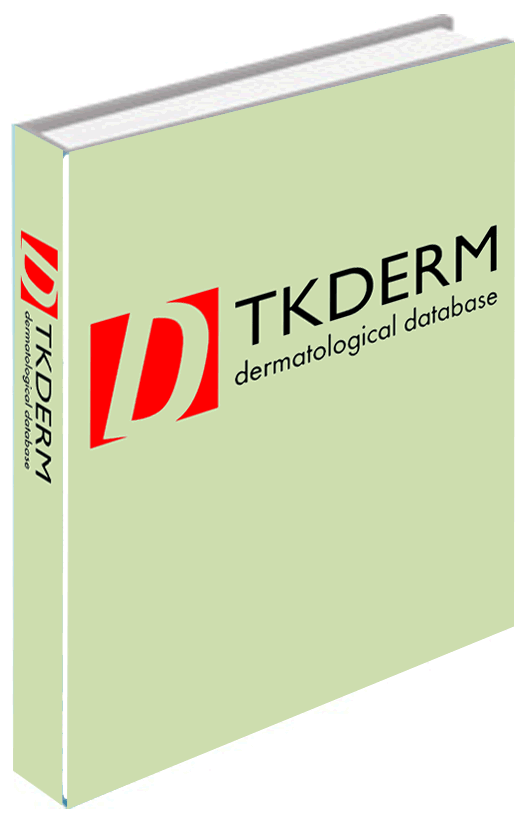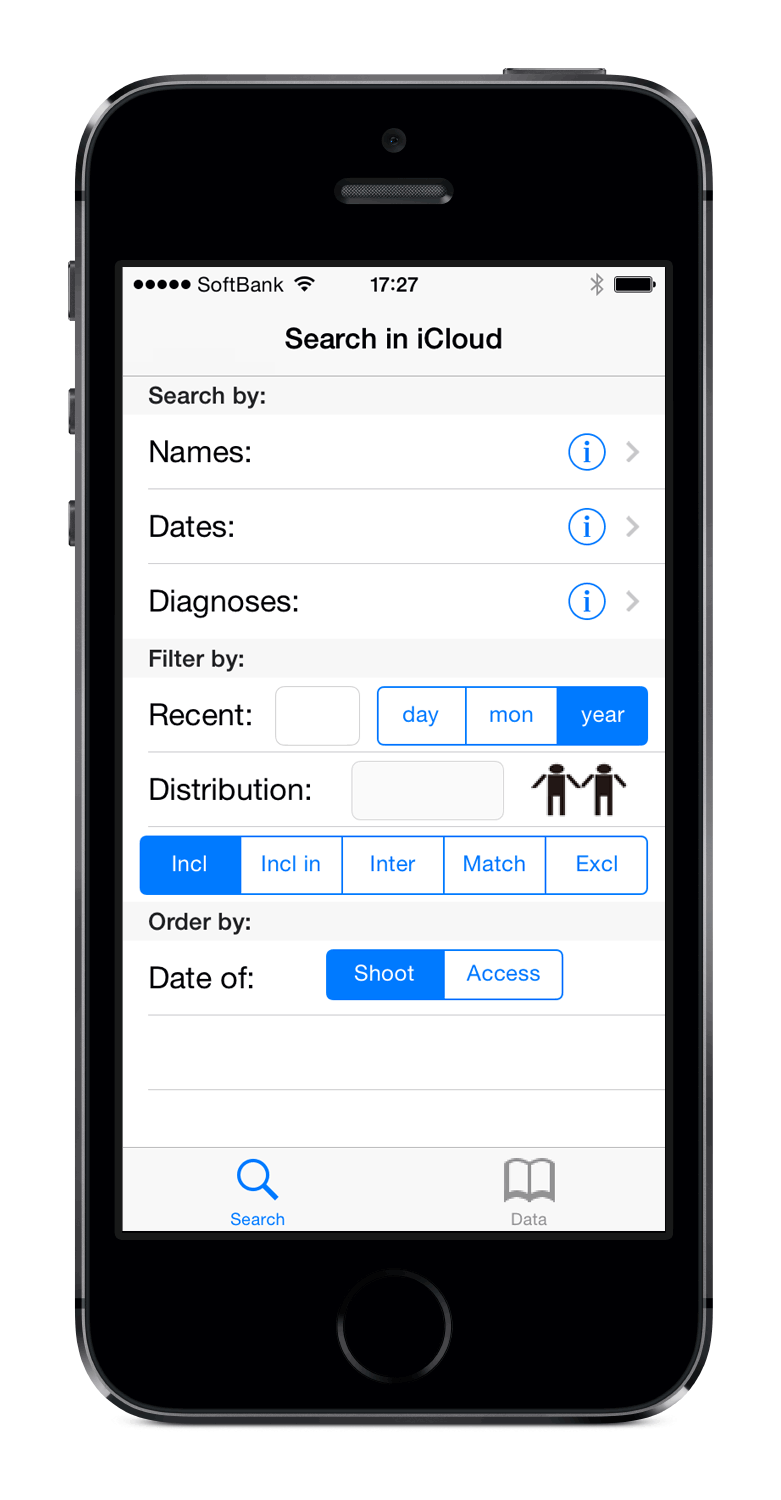Unique features of tkDerm include:
- It is an open source software distributed as GPL version 2.
- It uses PostgreSQL as a database server.
- It runs on Windows, Macintosh(OS X only) and Linux.
- You can use a digital camera as well as a film camera.
- It relates data with photos automatically based on the time stamps of digital photos.
- You can search by the distribution of an eruption.
- You can design the format by which the distribution of an eruption is recorded.
- It offers a facility to back up photos easily.
- You can store microscopic and dermatoscopic photos as well as clinical photos.
- You can browse photos found by a search rapidly.
- It takes you less time to shoot photos for following up a patient by reusing the patient's data you inserted at the previous visit.
- You can make image collections of your interest.
- It can keep your patients anonymous when it shows their data.
- It can change a font for showing data.
New features of version 1.5.0
- It can create databases for tkDerm touch that runs on the iPad.
New features of version 1.4.2
- The starpack version is available on Windows and Macintosh.
- The setup wizard will pop up when you start tkDerm for the first time, which eliminates the separate program that initializes tkDerm.
- Users can design the format with which the distribution of an eruption is recorded.
New features of Version 1.4
- It can be distributed on the condition described in the GNU General Public License version 2.
- You can add new functions to tkDerm with a Tcl-facility named package.
- It is shipped with a package named histogram that outputs histograms of search results based on the age, shooting time or distribution of an eruption.
New features of Version 1.3
- It can show multiple images in a window. This enables you to compare a photo with another easily.
- The image window can be presented as a page of the tabnotebook.
- It can encrypt patients' IDs and names.
New features of version 1.2
- It has a new main window integrating the search and thumbnail windows that were independent windows in the previous version.
- You can browse images rapidly by the mouse cursor just being over the Search Result panel.
- Windows Vista and Intel Mac(OS 10.5 Leopard) are added in the list of supprted platform.
- It can connect with a server on a remote host.
- It can cooperate with Adobe Photoshop and Bridge via JavaScript.
- It can keep patients anonymous when showing thier data.
- It can change a font for showing search results.
Why can't dermatologists are satisfied with commercial database products ?
It is necessary to use some kind of databases when dermatologists manage their collections of clinical, dermatoscopic and microscopic photos. When they are going to use commercial database products for this purpose, they will encounter some difficulties:
- Commercial image database softwares are intended to manage image files themselves because their targets are professional or amateur photographers and their aim is , in one word, to choose a best shot. On the contrary, dermatologists regard images as records of examinations. Therefore, they are interested in storing and searching images rather than selecting better images from ones with lower quality.
- Dermatologists regard every image belonging to a photo session as equally important because each one is necessary to record a whole eruption. In other words, they manage image files on the session or patient basis. This is why commercial image databases, which handles images on the image file basis, can’t satisfy their needs.
- Commercial image databases are developed to fulfill the purposes of general photographers and lack functions specific to clinical dermatology, for example, a facility to search by the distribution of an eruption.
The special situation in which dermatologists take pictures enable them to register image files automatically.
Dermatologists take pictures of their patients at their offices. This means that they shoot near a computer. In other words, they can insert patients’ data in the database when they shoot photos. This condition can't be met for every photographer in general. Why don’t they utilize such a lucky situation ? By utilizing this condition, it could be possible to develop a dermatological image database that would realize a convenient facility a general-purpose image database can’t offer, that is, Automatic Image Registration.
Mechanism of Automatic Image Registration
Digital cameras record time stamps in the photos shot by themselves. By comparing the stamps with the time columns of the photo session data you inserted in the database when you shot the photos, it is possible to relate the photos with the session data. tkDerm makes data-to-photo mapping by this procedure.
A brief history of tkDerm
Around 1999, a prototype of tkDerm was developed in a month or so to realize Automatic Image Registration. Tcl/Tk was used as a programming language and PostgreSQL was chosen as a backend. The original platform on which tkDerm was developed was Linux. For several years, tkDerm supported only Linux and other Unix-compatible platforms. Around 2005, PostgreSQL supported Windows and a year later, tkDerm was modified to support WIndows and Mac OS X. In November 2007, this site was opened to distribute tkDerm.


